| Article ID | Journal | Published Year | Pages | File Type |
|---|---|---|---|---|
| 3171679 | Pediatric Dental Journal | 2009 | 7 Pages |
A 10-year-and-4-month old girl was shown to have inverted maxillary right second primary molar and permanent successor teeth, after being referred to our clinic for examination of an unerupted maxillary right second primary molar. Orthopantomograph images taken at the age of 7Y4M showed an impacted maxillary second primary molar and ambiguous tooth germ of its permanent successor, while images obtained at the age of 10Y4M exhibited the tooth germ of the permanent successor in a position on top of the impacted primary molar. Orthopantomographs were obtained twice during the next year, which showed development of the second premolar. The dental age of the entire dentition, except for the maxillary right second premolar, at 7Y4M was considered to be consistent with her chronological age, whereas it was approximately 6 months to 1 year behind of chronological age when determined at the age of 10Y4M, 11Y4M, and 12Y3M. The dental age of the permanent second premolar gradually increased, however, remained approximately 4 years behind chronological age. At 12Y3M, computed tomography examinations were performed to clarify the three-dimensional positions of the second primary molar and its permanent successor. At that time, the impacted primary molar was located close to the inferior part of the maxillary sinus, while the tooth germ of the permanent successor was located in the apex region of the adjacent first permanent premolar and first permanent molar. We decided to carry out the periodical examinations to observe the maxillary right second primary molar and premolar.
